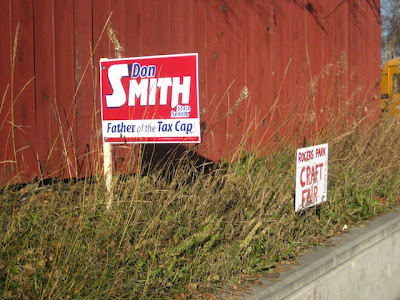I thought I'd start with the two candidates running for the House in my district - the new district 15.
Basically this is Northern Lights on the north, Pine and Boniface on the east, Tudor to Elmore to Dimond on the south, and New Seward, MacInnes, LaTouche on the west.
I thought it would be fairly easy because I knew both candidates. I've known Democrat Andy Josephson's father, not well, for a long time. Dick Traini, the Republican, graduated from the Masters of Public Administration program 25 years ago and had been my student. He's told me that his education has given him a much broader view of local politics and an understanding of the balance of public and private interests than he would have had. He's also been my local Assembly member for a long time. (Assembly is a non-partisan office and Dick has been a registered Independent until fairly recently.) I've voted for him, though in this race I did contribute to Josephson's campaign. Dick knew that but he agreed right away to participate. I was able to get Andy's done fairly quickly. But Dick's Assembly obligations got in the way and we weren't able to schedule a time to do the video. Before I left for LA I let Dick know I was going to proceed without his video, since there wouldn't be enough time before the election when I got back.
 |
| Andy Josephson |
I wasn't going to edit - I would just let it run as they spoke. That way there'd be no issues about my trying to make one candidate look better than another. (It also would be a little slower than the video people normally see on television where there are lots of cuts, where the pauses are edited out, etc.) I did start the interview and then stopped it and started over as the candidate - who is not used to doing video interviews - got a better sense of things. He was also tapping the table and causing the camera to jiggle. I've left out the original beginning. Other than that, this is just what he said.
I've marked different parts of the video so you can jump to topics you want to hear. Click on the dots on the video bar at the bottom of the video screen.
Basically, Andy Josephson's values are influenced strongly by American culture; by family, including playing baseball (starting about 2:40); and from friends. His response to how he would decide on legislation starts at about 5:40 and is worth watching. This includes advice from trusted mentors who have more experience in the legislature than he has, the reality of time and needing to prioritize bills by importance, how it affects his district and what his constituents care about. I asked how he'd handle demands from his party that conflicted with his values. I also asked if there were any dealbreakers - issues that he felt too strongly about to compromise.
So this will be my experiment on this. I don't have a problem with something being entertainment as long as it's also substantive. But when doing political videos, editing raises questions of whether I'm tyring to bias the video, so I've left the video pretty much what he said without editing.
I left out, as I said above, his first attempt at this. The point was for him to feel comfortable and to express himself as well as he could without spending a lot of time.
I'd also say that he hasn't seen the finished product and thus has not approved or disapproved of it.






















